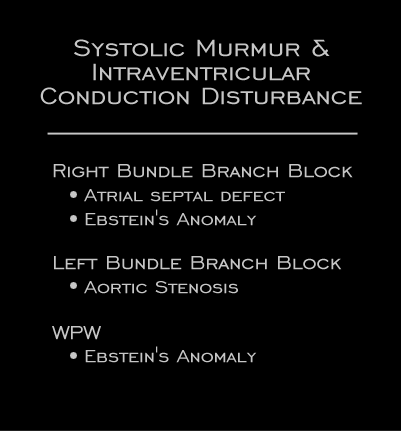
Some of the lesions that cause systolic murmurs are also associated with intraventricular conduction disturbances. For instance, incomplete right bundle branch block (QRS duration less than 0.12 seconds) occurs in almost all patients with an atrial septal defect and complete right bundle branch block (QRS duration greater than 0.12 seconds) is common in patients with Ebstein’s anomaly. Ventricular pre-excitation (WPW) also occurs, albeit less commonly, in patients with Ebstein’s anomaly. Left bundle branch block may occur in patients with aortic stenosis.
